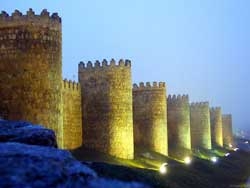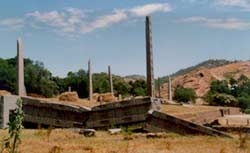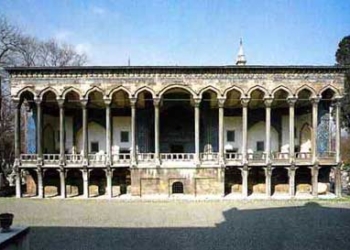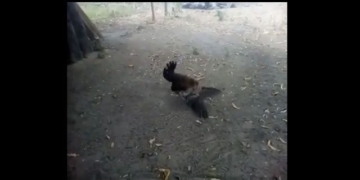Finland is set to become the first country in the world to attempt to bury nuclear waste in a deep underground grave, capable of storing it for the next 100,000 years.
The Onkalo Nuclear Waste Repository has cost $1.07 billion to construct and is expected to officially start operations next year. The introduction of this facility is regarded by industry experts as a game-changer for the sector.
The plan by Finnish authorities is to pack used nuclear fuel into airtight containers and store them 400 meters underground in a forest area in the southwestern part of the country, according to Interesting Engineering. Finland aims to carry out this operation in 2025 or 2026. The construction of the underground storage facility is nearing completion and is regularly analyzed to detect any leaks, ensuring maximum safety.
Onkalo, meaning “cave” or “hollow” in Finnish, is the name of the new facility designed to store nuclear waste for centuries to come. The facility is located near three nuclear reactors on Olkiluoto Island, approximately 240 kilometers from the capital, Helsinki.
“Everyone knows that a geological repository for nuclear waste is needed, but only Finland has managed to do it,” said Rafael Mariano Grossi, Director of the International Atomic Energy Agency (IAEA).
Meanwhile, other countries such as the UK, the US, Sweden, France, and Canada are still in the process of finding similar solutions. “Finland is at least a decade ahead of the world,” commented Gareth Law, a chemistry professor at the University of Helsinki.
Onkalo, the world’s first permanent nuclear waste repository. In a few years, used fuel rods encased in large copper containers the height of a giraffe will be transported here by elevator. Following this, autonomous vehicles will take them to one of the dozens of dead-end tunnels within the network resembling an ant colony in the bedrock.

Used uranium fuel rods will be sealed in corrosion-resistant copper containers. (Photo: Reuters)
After 30 to 40 copper containers are buried in the tunnel floor, the burial holes will be sealed with bentonite, a water-absorbing clay. Engineers will also fill each tunnel with bentonite and seal it with concrete. These copper containers will remain undisturbed for 100,000 years, even if a warming climate in the coming centuries leads to the next Ice Age. According to Antti Mustonen, a geologist working on the project, the nuclear waste repository lies within stable bedrock 430 meters below the surface and 420 meters below sea level.
Two of Finland’s four reactors are located in Olkiluoto. After a new reactor in Olkiluoto connects to the power grid later this year, nuclear power will account for more than 40% of the country’s electricity. However, nuclear energy also comes with a caveat: used uranium fuel rods are extremely hot and highly radioactive. The fuel rods can be immersed in water pools to cool down over decades or encased in steel and concrete for dry storage. Regardless of the method, surface storage is vulnerable to incidents, leaks, or management failures over the thousands of years that hazardous waste remains, according to Budhi Sagar, a nuclear expert who previously worked at the Southwest Research Institute.

Construction work inside the waste repository. (Photo: TVO)
Without long-term measures, waste will accumulate. Finland had about 2,300 tons of waste in 2019. An estimated 263,000 tons of used fuel are stored in facilities around the world, according to a report by the International Atomic Energy Agency (IAEA) this year.
Posiva, the company developing and managing Onkalo, began searching for a site to build the repository in the 1990s. From dozens of potential sites, they narrowed the list down to four locations with different geological characteristics. The final choice was made between Olkiluoto and the area around the town of Loviisa. In 1999, Posiva proposed the site for Onkalo’s construction.
According to geologists, the bedrock at Onkalo is nearly stable for billions of years, despite evidence of earthquakes over the last 10,000 years as glaciers retreated at the end of the last Ice Age. Posiva’s research team predicts that no major earthquakes will occur in the area until after the next Ice Age. Onkalo is situated between two parallel fault zones, approximately 800 meters apart. If an earthquake occurs, the activity will be concentrated along the two existing fault lines. They will absorb the movement, and nothing will happen in the area in between.
However, earthquakes are not the main threat. According to Sarah Hirschorn, director of geological science at the Nuclear Waste Management Organization of Canada (NWMO), the only way for objects to move from the storage site to the surface and impact humans is through water flow. This means the underground repository should be located in clay, salt, or hard crystalline rock, as they have small, non-communicating pores, making it difficult for water to penetrate. At Onkalo, the nearly 2-billion-year-old bedrock is primarily gneiss, a hard rock formed under high temperatures and pressures.
Although there are no hollow structures, the rock may still contain cracks, and Posiva must map these to avoid them as workers dig deeper. Cracks control the movement of water, explains geologist Neil Chapman, an advisor to the Finnish Radiation and Nuclear Safety Authority (STUK). If any significant cracks are found during drilling, that hole will not be used. If water somehow seeps into the repository, it must pass through bentonite and copper to reach the used nuclear fuel.
Once at Onkalo, the used fuel will be processed at a packaging plant. In a stainless steel room surrounded by 1.3-meter-thick concrete walls, robots will remove any remaining water from the fuel rods from the storage pool, sealing them inside cast iron boxes placed in copper containers. Argon gas will be pumped into the space between the box and the container to create an inert atmosphere, after which the copper container will be tightly welded. Copper has a slow corrosion rate. When groundwater seeps down to the depth of Onkalo, chemical reactions or bacteria will consume all the oxygen.
In addition to the copper containers, the surrounding bentonite material also prevents radioactive leaks. This mineral is not only water-resistant but also keeps microorganisms away from the surface of the copper containers. Microorganisms could pose a threat as they metabolize sulfate in groundwater and convert it into sulfide, causing slow corrosion of copper. Posiva acknowledges this possibility, but the company’s calculations show that even if sulfide concentrations increase, the copper containers will still last over 100,000 years. If all safety measures fail, any leaking waste would still have to pass through the ultimate barrier. After decades of travel to reach the surface, the radiation levels would decrease.





















































